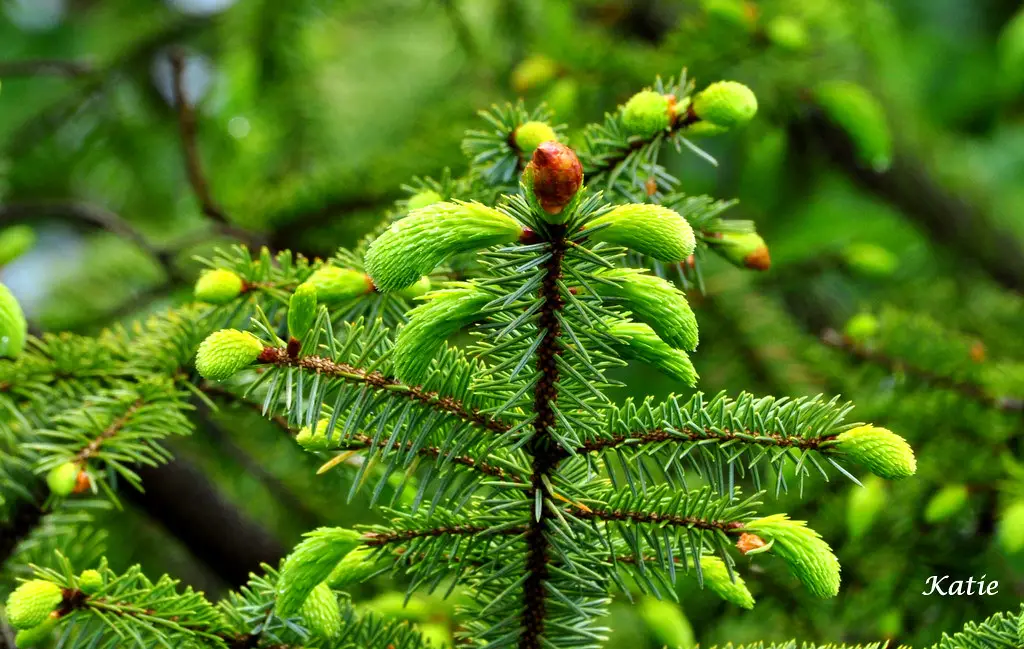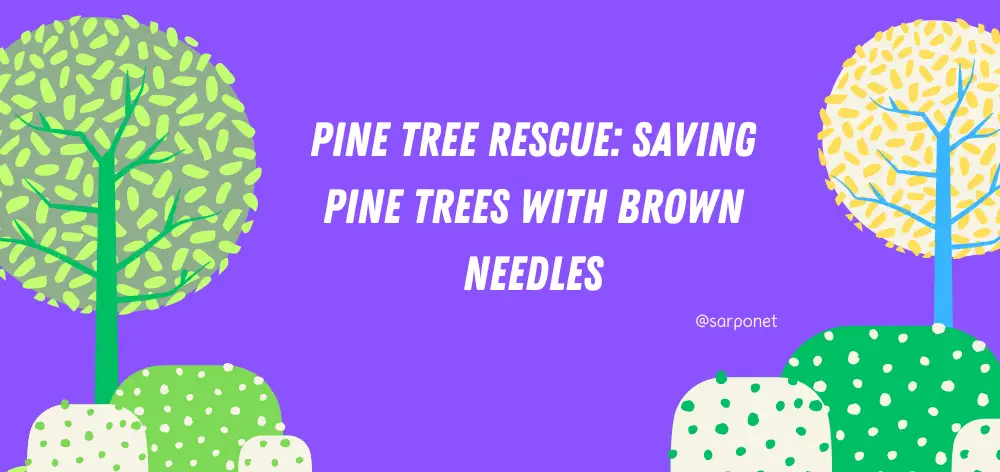How To Save A Young Tree With Damaged Bark
In this blog post, we will explore the steps you can take to save a young tree with damaged bark. Trees are a valuable part of our environment, providing shade, beauty, and oxygen. However, they are also susceptible to damage, especially when they are still in their early years. Damaged bark can leave a tree vulnerable to disease, pests, and even death.
But fear not, as we will discuss various techniques and methods that you can employ to help save a young tree with damaged bark and ensure its healthy growth and longevity. So if you have a young tree in need of some TLC, keep reading to learn how you can be its savior!
Over the years, trees take a lot of abuse. They get hit by lightning, battered by wind and snow, and infested with bugs. But they keep on growing.
Sometimes, though, they need a little help to heal their wounds. Here’s how to save a tree with bark damage. First, assess the damage.
If the bark is cracked or broken, but still attached to the tree, it will probably heal on its own given time. But if the bark is completely detached or missing in spots, you’ll need to take action to prevent further damage and protect the tree from infection. Next, clean up any loose bark or debris around the wound.
This will help keep insects and disease from getting into the tree. Then apply a generous layer of mulch around the base of the tree – at least 4 inches deep.
- Inspect the tree for any visible damage to the bark
- If the damage is extensive, call a tree service to remove the damaged portion of the tree
- Apply a thin layer of wound dressing to the exposed wood
- Monitor the health of the tree and consult with a professional if necessary

Credit: www.gardeningknowhow.com
How Do You Repair Damaged Tree Bark?
If your tree has damaged bark, you’ll need to take action to repair it. Otherwise, the damage will likely spread and eventually kill the tree.
The first step is to clean up any debris or loose bark from around the wound.
This will allow you to better assess the damage and also give you a clean surface to work with.
Next, use a sharp knife to cut away any ragged or damaged bark. Make sure your cuts are clean and smooth – avoid jagged edges which could further damage the tree.
Once you’ve removed all of the damaged bark, you’ll need to apply a sealant. This can be anything from tar or paint to wax or resin. The goal is simply to create a barrier that will protect the exposed inner wood from further damage.
Finally, keep an eye on your tree and monitor its progress. If the damage appears to be spreading, you may need to repeat some of these steps or consult with a professional arborist for additional help.
Can Damaged Tree Bark Heal?
When tree bark is damaged, it can heal itself over time. The tree will first form a protective layer of cells called the callus. This helps to protect the inner layers of the tree from further damage.
Once the callus has formed, new cells will begin to grow and fill in the damaged area. It can take several years for the bark to fully heal.
Can a Tree With Missing Bark Be Saved?
If a tree is missing bark, it can be saved as long as the damage isn’t too severe. The first step is to clean off any debris or dirt that’s on the exposed wood. This will help the tree heal faster.
Then, you’ll need to apply a wound dressing to the area. You can use something like a bandage or gauze to keep the dressing in place. Make sure you check on the tree regularly and reapply the dressing as needed.
With some time and care, your tree should be able to make a full recovery!
Will a Tree Survive If Bark is Stripped?
A tree’s bark is essential to its survival. The bark protects the tree from disease, pests, and extreme weather conditions. If the bark is stripped away, the tree will be vulnerable to these threats and will likely die.
Young Tree Aftercare – Bark damage
Young Tree Bark Damage
If you have young trees on your property, you may have noticed some damage to the bark. This can be caused by a variety of factors, including insects, animals, and weather. While it may be unsightly, most of this damage is not serious and will not impact the long-term health of your tree.
There are a few things you can do to mitigate bark damage:
-Remove any dead or damaged branches from the tree. This will help reduce the amount of surface area that is vulnerable to further damage.
-Prune back any overgrown branches. This will help improve air circulation around the tree and allow the bark to dry more quickly after rain or snowfall.
-Apply a protective covering to the trunk during periods of extreme weather (e.g., freezing temperatures or heavy winds).
This will help shield the bark from direct contact with harsh conditions.
How to Repair Tree Bark Damage from Deer
If you find that your tree has been damaged by deer, there are a few things you can do to repair the damage. First, remove any loose bark from the tree. Next, use a sharp knife to make clean cuts around the damaged area.
Be sure to angle the cuts so that new growth will be able to cover the wound. Finally, apply a layer of tree sealant or wound dressing to help protect the area while it heals.
Can a Tree Recover from Bark Damage
Bark damage is a common problem for trees, especially those that are located in urban areas. The good news is that bark damage is usually not fatal to trees and they can recover from it.
There are several things that can cause bark damage, including: car accidents, construction work, lawnmowers, and even animals.
When the bark is damaged, it can create an entry point for pests and diseases. This can kill the tree if the infestation is severe enough.
The best way to prevent bark damage is to avoid it altogether.
However, if your tree does suffer from bark damage, there are some things you can do to help it recover:
1) Prune away any dead or damaged branches. This will help the tree direct its energy towards healing the wounded area.
2) Apply a tree wound dressing to the affected area. This will help protect the wound from further damage and also aid in healing.
3) Water the tree regularly during dry periods.
This will help keep the tree healthy and promote new growth.
Tree Bark Repair Tape
If you have ever had a tree branch fall on your car or house, you know that it can be a pain to repair the damage. But did you know that there is a product that can help make the repairs easier? It’s called tree bark repair tape, and it’s designed to help hold together the broken bark so that it can heal properly.
This type of tape is made from a strong, flexible material that can withstand the elements and provide support while the bark heals. It’s also easy to use – simply remove any loose debris from the damaged area, then apply the tape in a criss-cross pattern over the break. For added stability, you can also use nails or staples to secure the edges of the tape.
Once applied, tree bark repair tape will need to be left in place for several weeks to allow healing to occur. During this time, it’s important to keep an eye on the break and make sure that it isn’t getting worse. If you see any sign of infection or further damage, be sure to consult with a professional before removing the tape.
If all goes well, your tree should be able to heal itself with minimal scarring thanks to this helpful product!
How to Save a Damaged Tree
When a tree is damaged, it can be difficult to know how to save it. If the damage is severe, the tree may need to be removed. However, if the damage is not too severe, there are steps that can be taken to try to save the tree.
The first step is to assess the damage. If more than 50% of the tree’s bark is damaged or missing, it is unlikely that the tree will survive. Also, if the trunk is split or there are large branches broken off, the chances of survival are slim.
However, if the damage is less severe, there is a good chance that the tree can be saved.
Once you have assessed the damage, you need to decide whether or not you can address it yourself or if you need to call in a professional. If you have experience with trees and feel confident in your ability to fix the damage, then you can likely do it yourself.
However, if you are not sure what needs to be done or lack confidence in your abilities, it’s best to call in a professional arborist.
If you decide to try and save the tree yourself, there are several things you need to do:
1) Remove all debris from around the base of the tree – this includes leaves, twigs, and branches.
Debris can trap moisture and cause rot which will further damage your tree;
2) Inspect all ofthe roots – look for any that are damaged or exposed;
3) Prune away any dead or dying branches;
4) Cover any wounds with Tree wound paint – this helps protect against disease and pests;
5) Stabilize any loose soil around your tree with mulch or rocks;
6) Water regularly – keep an eye on yourtree’s leaves for wilting as this could indicate that it needs more water;
7) Fertilize annually – this gives yourtree essential nutrients that will help it recover from damage and promote new growth;
8) Monitor yourtree closely for signs of improvement or decline.
Best Tree Wrap for Damaged Bark
When it comes to damaged bark, you want to make sure that you are using the best tree wrap possible. There are a few different options when it comes to tree wraps, but not all of them are created equal. Here is a look at some of the best tree wrap for damaged bark:
1. Burlap – This is a natural material that is often used as tree wrap. It is biodegradable and helps protect against sun and wind damage.
2. Bubble Wrap – This option is great for small areas of damage.
It provides cushioning and can help prevent further damage.
3. Plastic Sheeting – This is another good option for small areas of damage. It can be taped or stapled in place and provides a barrier against the elements.
4. Tree Guard – This is a commercial product that is designed specifically for protecting trees from damage. It comes in rolls and can be cut to fit any size tree trunk.
5. Aluminum Foil – This can be used as a temporary measure until something more permanent can be put in place.
It reflects sunlight and heat, which can help prevent further damage to the bark.
How to Repair Tree Bark Damage from Rabbits
Rabbits can cause a lot of damage to trees, especially young trees. The bark of the tree is their main target, as they like to nibble on it. This can lead to the tree’s death if the damage is severe enough.
Luckily, there are some things you can do to repair the damage and save your tree.
The first step is to remove any dead or damaged branches. This will help the tree heal faster and prevent further damage from occurring.
Next, you’ll need to apply a generous amount of mulch around the base of the tree. This will help protect the roots and keep them moist. Finally, you’ll need to give the tree time to heal.
It may take several months for the damage to completely disappear, but with proper care, your tree should make a full recovery!
Tree Bark Damage by Animals
Animals can cause damage to trees in several ways. Some animals, such as porcupines, eat the bark of trees. This can kill the tree if the animal strips all the way around it.
Other animals, such as rabbits and deer, eat the new growth at the tips of branches. This is called “browsing” and can damage or even kill a tree if not enough new growth is left for the tree to continue its normal growth pattern. In some cases, animals use trees for shelter or nesting which can also cause damage.
Animals that dig into the ground around a tree’s roots can damage or kill it by exposing its roots to air and sun or by compacting the soil around them so that they cannot get enough water.
Frequently Asked Questions:
How do you wrap tree bark?
Wrap tree bark with breathable material (e.g., burlap), starting from the bottom and overlapping as you go up. Secure with twine, leaving room for air circulation. Remove in spring and check periodically. Avoid plastic wraps to prevent moisture buildup.
What can I use instead of tree wrap?
Use burlap or breathable fabric for wrapping tree bark. If unavailable, consider paper or cardboard secured with twine. Avoid plastic to prevent moisture buildup.
Can tree bark grow back?
Tree bark cannot grow back once it’s damaged or removed. However, the tree can generate new layers of bark around the damaged area to cover and protect it. The process of bark regeneration is a natural response to injury, and the new bark helps in sealing the wound and protecting the inner layers of the tree. Regular care, including proper pruning and protection, can support the tree’s ability to recover and generate new bark layers.
Conclusion
You can save a tree with bark damage by following these simple steps. First, remove any dead or damaged branches. Second, use a sharp knife to cut away the damaged bark. Third, apply a tree wound dressing to the exposed area.
Related Articles:
10 Best Small Evergreen Trees with Non Invasive Roots
 Dr Ahsanur Rahman, PHD
Dr Ahsanur Rahman, PHDPine Tree Rescue: Saving Pine Trees with Brown Needles
 Dr Ahsanur Rahman, PHD
Dr Ahsanur Rahman, PHD



